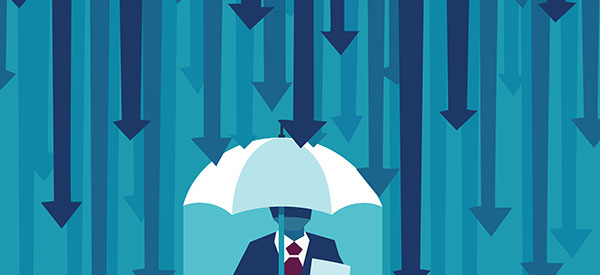Suffering harm, whether physical, material or moral, can leave an indelible mark on the victims. Whatever the nature of the damage suffered, when it results from the fault of a person, there is reason to be compensated for such a lack of diligence. This principle is also recognized by Quebec law and supported by what is called a civil liability lawsuit.

Such a remedy is not intended to punish the wrongdoers but rather to force them to make reparation for their act which caused harm. This form of justice may well apply to your situation if you have suffered any damage!
Find out what a lawyer can do to help you win your civil liability lawsuit!
When can you sue for civil liability?
In Quebec, the law provides for a moral duty for all individuals not to cause harm to others. Moreover, when he fails to fulfill such a duty, he is bound to make reparation for the same damage, whatever its nature. It is therefore a way for the victim to obtain compensation and to be restored to his original condition.
Thus, a civil liability action can be brought as soon as you have been the victim of a fault that caused you damage and that it was caused by this same fault.
What is the difference with contractual recourse? Liability recourse opens when an individual causes you damage outside of a contractual relationship and therefore, in the absence of a contract. That’s why this is a violation of the general obligation not to harm others!
Interest to file a lawsuit
Filing a lawsuit is not as easy as most people seem to think. As tempting as it may be to prosecute as soon as you are injured, the system is designed to limit prosecutions to the most relevant and well-founded. There are four main criteria you will need to meet for your lawsuit to be admitted, that is, to be heard in court. Lawyers know how to recognize these criteria and so will you now.
Legal: Personal disputes are of no concern to the courts. Judges are responsible for hearing cases revolving around a point of law. Therefore, your civil liability lawsuit must be supported by relevant laws. Since you are not lawyers by training, lawyers are the experts par excellence in assessing the legal merits of your case.

Personal and direct: A lawsuit aims to compensate for the damage you have suffered personally. It is, therefore, not possible to sue for the damage that another person has suffered.
Born: A lawsuit aims to assert an existing right, a prejudice which therefore arose when the appeal was brought. While it is possible, to some extent, to sue for future damage, the general rule is that redress is for damage already caused.
Current: The qualifier “current” does not mean that one cannot sue for a past fact, but rather that it is necessary to do so before the remedy lapses or the limitation period expires. Non-contemporary claims are therefore of no interest to the courts.
The aforementioned criteria are applicable to all types of civil lawsuits and not just civil liability claims. You will, therefore, need to demonstrate these criteria to complete your appeal and the help of a lawyer accustomed to this type of case will certainly be very useful to you!
See below for the specific requirements of a civil liability claim.
Establish the presence of a fault
The first step in a civil liability claim is to establish the presence of a fault. Damage caused by a non-wrongful act will not be the basis for such a remedy, which implies first of all proving the fault.
But what is a fault within the meaning of Quebec law? We will speak of a fault when a behavior will have the effect of harming others according to the standard of a reasonable person placed in the same circumstances.
The principle is often popularized by referring to the “good father” standard in order to determine what a reasonable person does or fails to do in a given situation. Furthermore, this threshold implicitly provides that the reasonable person, like the “good father”, is not perfect and that he may make some errors or excess without this constituting a fault.
Besides, this same good father is not a seer. He certainly cannot predict the outcome of any situation and be held responsible for damaging outcomes. Thus, the law provides that a fault will be committed by an individual only for the probable damages of a given situation and not for the possible damages.
This implies that, taking into account all the circumstances of an event alleged to be at fault, it will be necessary to ask whether the damage was probable or only possible. The nuance lies in the degree of probability of the event that follows.

To illustrate an example, it is likely that it will rain on a cloudy and windy day but it is also possible that lightning will strike an individual on the same occasion. The first scenario is probable, while the second is possible. The same logic applies in matters of civil liability, and the good father will only be required to avoid probable damage, under penalty of violating his obligation not to harm others.
There is obviously room for debate as to the standard of the reasonable person- a place that a lawyer working in the field of civil liability is sure to occupy. Not only must the presence of a fault be established, it must also be adequately qualified. This qualification does not affect the liability of the offender but rather his defenses to exonerate himself and limit the award of damages.
Serious fault: A fault will be qualified as serious when the act of the perpetrator shows serious recklessness or gross negligence. This is a situation in which the actions of the perpetrator indicate a marked lack of consideration for the welfare of the victim.
Intentional foul vs. voluntary: This concept of intentional or willful misconduct is particularly relevant in the award of damages. Some laws, including those governing insurance compensation, provide for limitations on the compensation of persons committing intentional misconduct, while others, in the area of rights and freedoms, provide for the award of punitive damages to the victim in such a case.
Willful misconduct is that of an individual deliberately causing an act such as hitting someone in the face following an argument. On the other hand, intentional misconduct goes even further. Not only is the act deliberate, but it is done with the intention of causing the harm itself. It is this last criterion relating to the intention to cause harm that will distinguish willful fault from intentional fault.
However, intentional fault does not end there. A person can be found guilty of such a fault when he does not act with the intention of causing harm but by acting in full knowledge of the harmful effects of his act.
The main advantage in proving intentional fault is the possibility of obtaining punitive damages under the Quebec Charter of Rights and Freedoms.
Malpractice: It is also possible that you are the victim of a misconduct caused by a professional in the course of your relationship with one of them. Whether it is a lawyer, a doctor, or an architect, this type of fault is subject to a slightly different standard. Instead of referring to the standard of the “good father”, one compares rather the gesture or the procedure carried out with the standards of the profession itself which requires a keen knowledge of the field in question.
The area of fault, in Quebec civil liability, is the subject of constant debate on what constitutes the behavior of a “good father”. To prove that there was a fault, you need the help of a lawyer specializing in civil liability!
Demonstrate the existence of prejudice
When a wrongful act has been proven, it is time to prove that the damage you claim to have suffered does indeed constitute one within the meaning of the law. It is the infringement of a “legally protected interest” that will constitute compensable damage. Among other things, the following criteria will help to prove your right to damages.
Certain and future harm: A harm will only be recognized if it is certain. This implies either that it arises at the very moment of bringing the action or, if it does not occur until in the future, that it will inevitably materialize. Future harm is required to be probable, not just possible. Future damage is mainly claimed for financial losses and lost profits.
Ripple damage: It is also possible to suffer so-called “ripple” damage when a loved one suffers damage from a fault but the event also causes you damage. Take, for example, the death of a loved one causing you significant moral and psychological suffering.
Moral damages: A victim can claim that a fault has caused him moral damages when one of his extra-patrimonial rights, such as the right to freedom of expression or to dignity, is infringed.
Material damages: Simply put, the damage will be material when property belonging to an individual is damaged by the alleged wrongdoer. Intangible goods are also included in this category, in particular intellectual property rights.
Bodily injury: Finally, an attack on the physical integrity of an individual may also be the basis for a civil liability claim, regardless of the seriousness of the injury itself.
With regard to the last three types of damage, it should be remembered that only one of them can be the basis for the action for liability because there cannot be two damages resulting from the same act. Thus, it is the primary violation of one of these rights that will form its basis.
Prove the link between fault and damage
The third element just as crucial as fault and harm is to prove the causal link between the two, that is, that individual fault is what caused the harm to the victim. In the absence of sufficient causality, it would be irrelevant to pursue this remedy. Moreover, it is the most debated aspect of the liability remedy of which several theories of sufficient causation apply.

Some take the view that a so-called adequate causality is at the origin of the damage to establish the causal link, meaning that only the elements which intervened directly in the realization of the damage can be considered as decisive. Sometimes, this is a high barrier to overcome.
In contrast, others advocate a more flexible theory whereby all the factors which contributed to the occurrence of the same injury can be invoked and considered to have caused the complete injury. This position obviously favors adequate proof of the causal link.
In the end, it is important to remember that this causal link is proven not beyond any doubt but rather by the balance of probabilities applicable in civil matters. The gray area found at the level of the causal link and this civil burden of proof justify hiring a lawyer specializing in civil liability!
Is it possible to be exonerated from a fault committed?
Do you think you are home free just because you have proven fault, damage, and causation? Not so fast! The culprit is not left helpless. The law provides for ways in which this individual can limit his liability through defenses recognized by law and by case law. While some situations allow full exemption, others will only mitigate the damages the victim is entitled to.
Fault of the victim: The main defense used to mitigate the responsibility of the culprit is invoking the fault of the victim. This entails establishing that despite having been at fault, the behavior of the victim had the effect of contributing to the damage suffered. This is the case of a person who acts negligently but who is still the victim of the negligence of another person at the same time. The appeal of the former will not be completely rejected in the majority of cases but the liability of the offender will be reduced.
Acceptance of risks: When the victim of an injury engages in an activity involving intrinsic risks, the perpetrator of a fault can exonerate himself by claiming that the victim knew the risks he would incur. Obviously, the victim must act with real knowledge of the risks involved.
The best examples of risk acceptance theory relate to extreme sports such as Alpine skiing and parachute jumps. Again, the victim is not stripped of legal remedies, but the riskier the activity, the less likely it is.
In addition, you always have to prove someone’s fault in such a situation. The ski center is, therefore, not required to compensate all skiers and snowboarders who are too reckless and who end up in the ambulance at the end of their day’s skiing. This one must have made a mistake!
Immunities from pursuit: These immunities only apply in certain contexts and for certain individuals only. Judges, Crown Attorneys, and the Good Samaritan Rescuing Others are the primary individuals who benefit from immunity from civil suits.
Are the documents excluding civil liability valid? Have you already signed a document excluding the civil liability of an individual or an organization that is commonly called a “waiver”? Know that such documents are, most of the time, invalid.
In fact, it is forbidden for an individual or an organization to limit its civil liability for moral or bodily harm caused to others. The only possibility that such a contract is valid applies when the exclusion relates to material damage. So most of the waivers you signed in your lifetime were not even worth the paper they were printed on!
What does a case of force majeure consist of?
A particularly powerful defense in civil liability law is that of force majeure. Unlike other types of defense, pleading force majeure has the effect of dropping the victim’s remedy altogether. Force majeure is described in several ways but English-speaking jurisdictions often qualify it as an “Act of God” because of its inevitability.
It can, therefore, be invoked when a fortuitous event prevents the offender from fulfilling his legal obligations. This defense must meet the following three criteria.
Irresistible: The offender must not be able to avoid the fortuitous event in order to successfully invoke force majeure. As long as it was possible to avoid it, the possibility of this defense will cease and the standard is high.
Unpredictable: This is the most difficult criterion to invoke because it must be proven that the fact is unforeseeable under the circumstances. For example, a snowstorm is not recognized as an unforeseeable event in Quebec, regardless of what the forecast indicates. In contrast, a never-before-seen monster storm could serve as an unpredictable defense.
Exterior: This last criterion refers to the fact that the act of force majeure must not be the work of the offender and must not be the source of an internal problem of the offender.
The role of insurance in matters of civil liability
Before you get on your high horse to file a civil liability claim, be aware that exceptions apply in certain areas. Indeed, the world of workplace and car accidents constitute so-called “no-fault” plans in which the victim is compensated in the event of damage, without regard to the responsibility of anyone.

The “no-fault” automobile regime: If you are the victim of an automobile accident that has caused you injury, there is no point in trying to sue the other motorist for damages, even if he is responsible for the accident. The Société de l’assurance automobile du Québec (SAAQ) will compensate you and pay for the costs related to your injuries.
The direct compensation agreement: Material damage to your vehicle in an accident cannot be the basis of a civil liability claim. It is the Direct Compensation Agreement that applies in such circumstances and every motorist should turn to their insurer for compensation.
The Act respecting industrial accidents and occupational diseases. If you are the victim of an accident in the workplace, an occupational injury, or an occupational disease, the law provides that it is the C.N.E.S.S.T, which will be responsible for compensating you. Your employer, therefore, has immunity from prosecution in this matter.
The advantage of these special civil liability regimes is that several presumptions are put in place by the Act respecting industrial accidents and occupational diseases as well as by the Automobile insurance Act in order to facilitate recourse for victims.
Are parents and guardians responsible for the actions of their children?
You wonder what would happen if your offspring did something that causes harm to others. The law provides for different thresholds of liability depending on the person taking care of the child. Moreover, the notion that children cannot be held legally responsible or that their parents are not accountable is completely false.
The minor “endowed with reason”. For a minor to be held legally responsible for these acts, a case-by-case analysis of their ability to “discern right from wrong” according to old legal terminology must be carried out. It is at this point that a minor will be considered to be “endowed with reason” and that his civil liability may be incurred. However, it is extremely rare to prosecute a minor because of the lack of practicality; it is rather to the parents that we will turn.
Parents’ Responsibility: First, parents are responsible for actions caused by a minor. However, parents have the opportunity to rebut this same presumption by arguing that they did not commit a fault in the education, supervision, and custody of their child. As long as the parent fails to meet one of these three criteria, his defense will fall and his liability will be engaged.
Responsibility of educators: The same obligations that apply to parents apply to guardians, supervisors, and educators of a minor child. However, unlike parents, these people will, most of the time, only have to prove an absence of fault in the supervision of the minor and not for all three cumulative criteria applicable to parents.
The volunteer babysitter: The volunteer babysitter criterion also applies to babysitters who receive little remuneration for their services. The law provides, in their case, that they are not responsible for the acts of minor children unless they have committed serious or willful misconduct in the performance of their duties.
The types of damages that can be obtained
The term “damages” is used in law to designate the monetary compensation that a victim receives following a successful civil liability claim. There are three main categories of damages in Quebec law which serves a function of reparation and sometimes, punishment. The type of damage to which you are entitled to will depend on the nature of the damage suffered and the type of fault committed.

Compensatory damages: These damages are those to which the victim of a civil liability claim will be entitled in most situations because the idea is to restore the victim of the damage to his original state. This remedy, as mentioned, is not intended to make the victim rich but to restore a situation deteriorated by the perpetrator of the fault.
Default damages: This type of damages serves to repair the damage suffered by the delay in the performance of a contract. For example, the failure to deliver the goods on the date stipulated in the contract can cause prejudice to the person who waited for the good in vain.
Punitive damages: This last type of damage has a simple and unique function: to punish the wrongdoer for the act he has committed. Unlike compensatory damages, they do not aim to restore the initial situation but to make the offender pay for his actions. Unlike the latter, the law must specifically provide for their attribution before they can be requested. In addition, willful misconduct is often required in order to claim punitive damages.
A lawyer accustomed to this type of remedy will be able to tell you from the outset the type of damages to which you are entitled in order to obtain fair and equitable compensation.
Compare Lawyers will help you find a lawyer for your civil liability action in Montreal
Being the victim of harm is a serious and significant event. As resources are limited, it is normal to seek compensation where it is possible to obtain it. If you are considering a civil liability remedy, the help of a lawyer specializing in civil claims is essential.
Compare Lawyers is the reference par excellence in the province to help you. We are able to put you in touch with the best civil liability lawyers in Montreal.
Just complete the form at the bottom of the page to get connected to a lawyer in your area. Why delay justice? This service is free and requires no obligation on your part!






